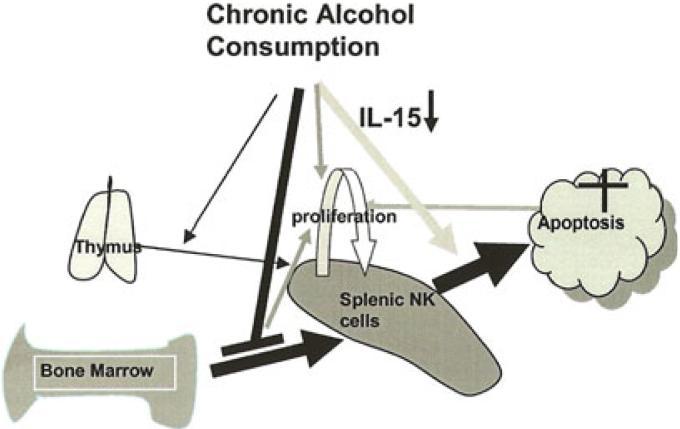Fig. 7.
Scheme outlining a mechanism for how chronic alcohol consumption decreases splenic NK cells. At steady state greater than 90% of the splenic NK cells are supplied by the BM. About 5% of the cells in the spleen originate from the thymus (Vosshenrich et al., 2006). Chronic alcohol consumption compromises NK cell release from the BM. Chronic alcohol consumption also enhances NK cell apoptosis in the spleen, which is associated with the decrease of splenic IL-15+ cells, especially IL-15+CD11chi cells. The decrease in splenic NK cells is related to the compromised release of NK cells from the BM and enhanced apoptosis of splenic NK cells. Thymic NK cells do not fill the void (Zhang and Meadows, 2008). The loss of NK cells in the spleen produces a “space,” which drives splenic NK cell homeostatic proliferation. Homeostatic proliferation cannot completely recover the deficiency in NK cells in the spleen due to enhanced apoptosis of these cells. Administration of exogenous IL-15 transiently restores the normal levels of NK cells, but does not alter the enhanced apoptosis induced by alcohol consumption. However, IL-15 in combination with IL15Rα reduces apoptosis of NK cells and also dramatically and equivalently increases the percentage and numbers of NK cells in the spleen.

